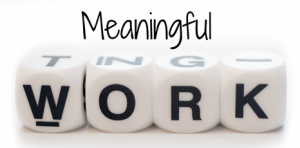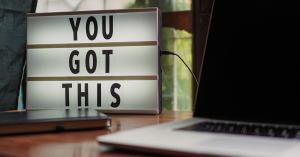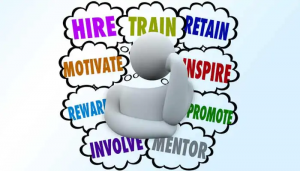Psychological Meaningfulness
 Most of us spend the majority of our week at the office, yet how many of us find our job to be meaningful? It can feel like a pipe dream to find work that makes us feel fulfilled and motivated. And the numbers back this up: according to a study by Bates College and Gallup, over 80% of college-educated Americans aspire to meaningful work, yet less than 50% actually attain it. This isn’t good news for organizations, as a lack of employee engagement and perceived meaninglessness leads to decreased productivity, lower morale and greater turnover
Most of us spend the majority of our week at the office, yet how many of us find our job to be meaningful? It can feel like a pipe dream to find work that makes us feel fulfilled and motivated. And the numbers back this up: according to a study by Bates College and Gallup, over 80% of college-educated Americans aspire to meaningful work, yet less than 50% actually attain it. This isn’t good news for organizations, as a lack of employee engagement and perceived meaninglessness leads to decreased productivity, lower morale and greater turnover
I just recently completed a certification from Cornell University on Diversity, Equity and Inclusion. The course, taught by Professor Nishii, takes a deep dive into the issue of employee engagement and it’s three components. We examined psychological availability last month and this month we’re taking a look at the second component: psychological meaningfulness.
What Is Psychological Meaningfulness?
What do we mean by the term “psychological meaningfulness”? Organizational psychologist William Kahn, author of the 1990 study “Physical Conditions of Personal Engagement and Disengagement at Work”, defined it as “employees perceiving their role/task as meaningful, both to the organization and within the context of wider society, to justify their “full self” being deployed.” Team members feel motivated within their positions due to challenge, opportunities for autonomy and strong goals. They feel like they’re a part of something larger than themselves.
What Psychological Meaningfulness Looks Like – and Steps to Avoid
There is no one-size-fits-all approach to meaningful work. It differs from person to person and often changes as people age, go through periods of personal change and have various life experiences. But we can agree that once a sense of meaningfulness is found, it brings about a greater sense of pride and achievement, a feeling of fulfillment and a satisfaction in finding work that is absorbing and interesting. And while there’s no magic formula for creating meaningful positions, there are definite steps that organizations don’t want to take. Here are 6 of the most common mistakes:
- Failing to recognize and appreciate team members’ contributions
- Creating a disconnect between organization and personal values
- Treating team members unfairly
- Overriding team members’ judgment and making them feel disempowered
- Creating a disconnect between team members
- Putting team members in situations where they feel unsafe
Most organizations don’t know where to begin when it comes to helping their employees find more meaning in their positions and increase overall engagement. The typical “office perks” are often surface level and don’t delve into the root issues. That’s where Leah M Joppy and Associates can help. A fresh approach and perspective, combined with experience tackling all different types of employee disengagement issues is just what you need to start next year off on a positive note! Call us at 301-670-0051 or email us at leah@lmja.com today.








